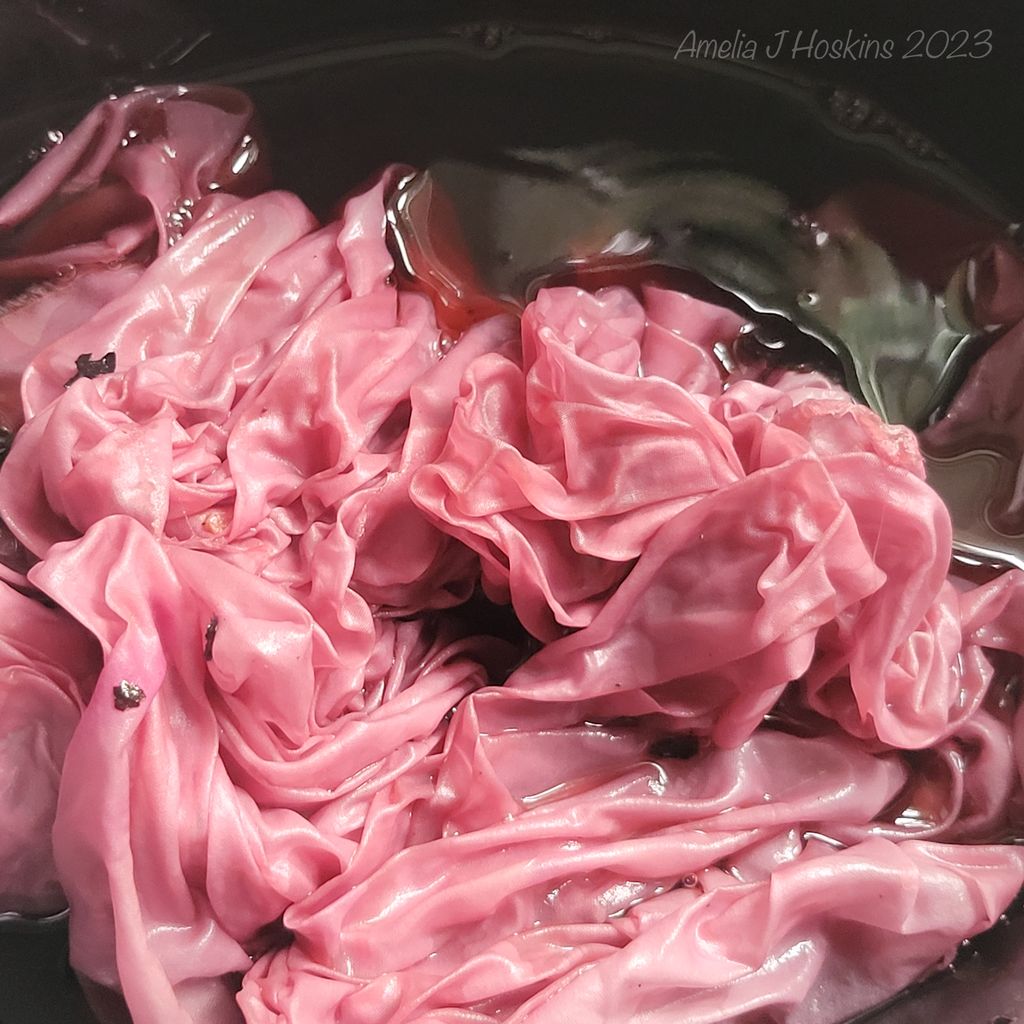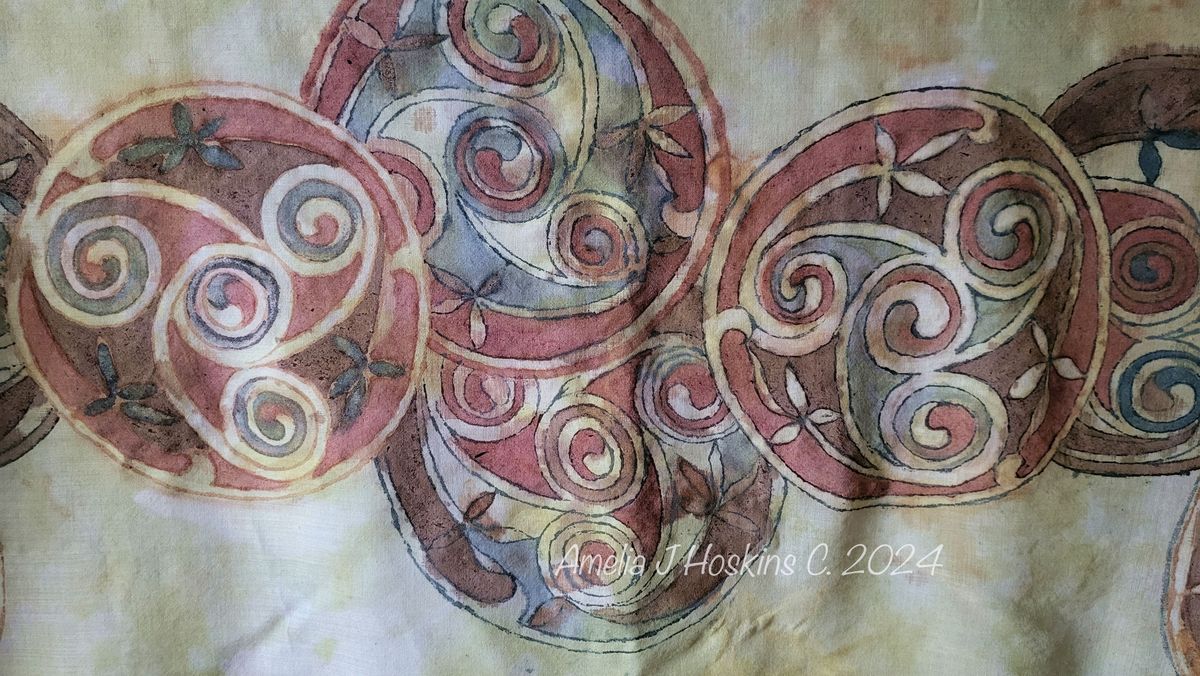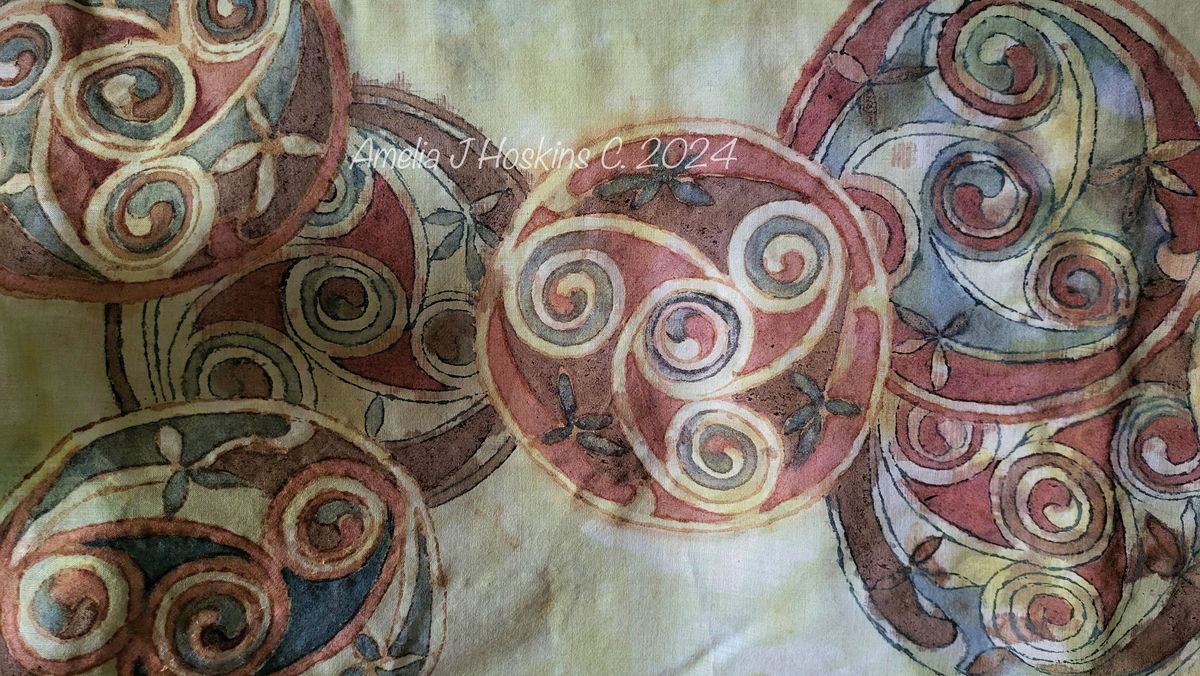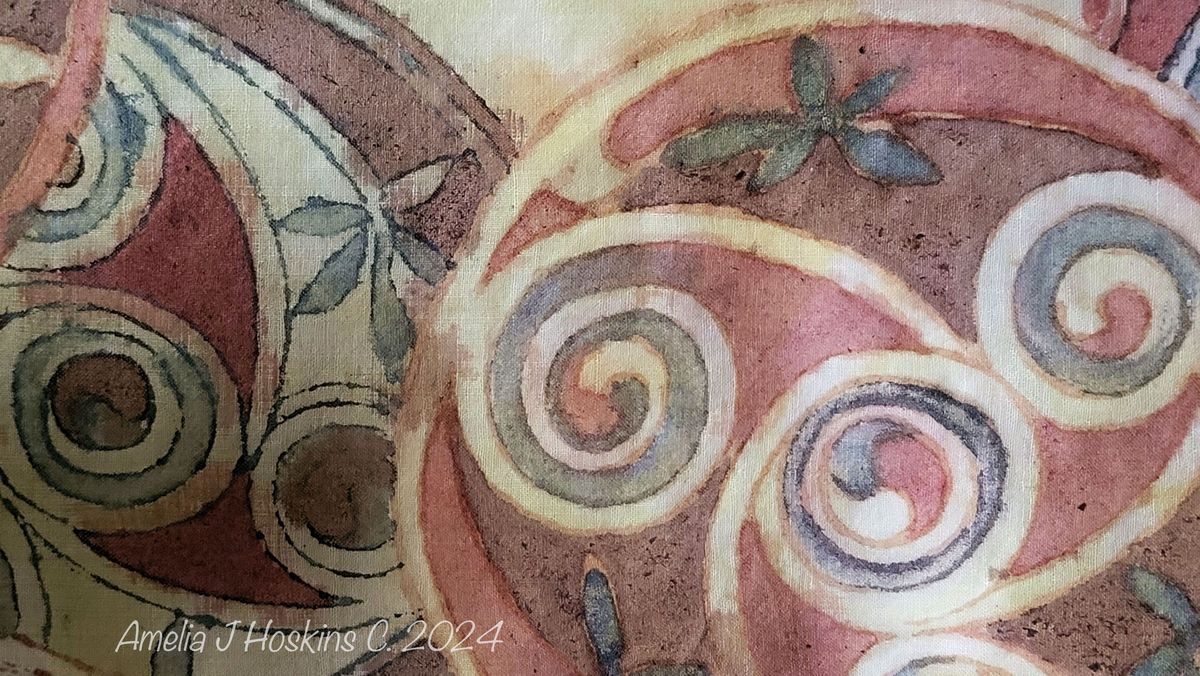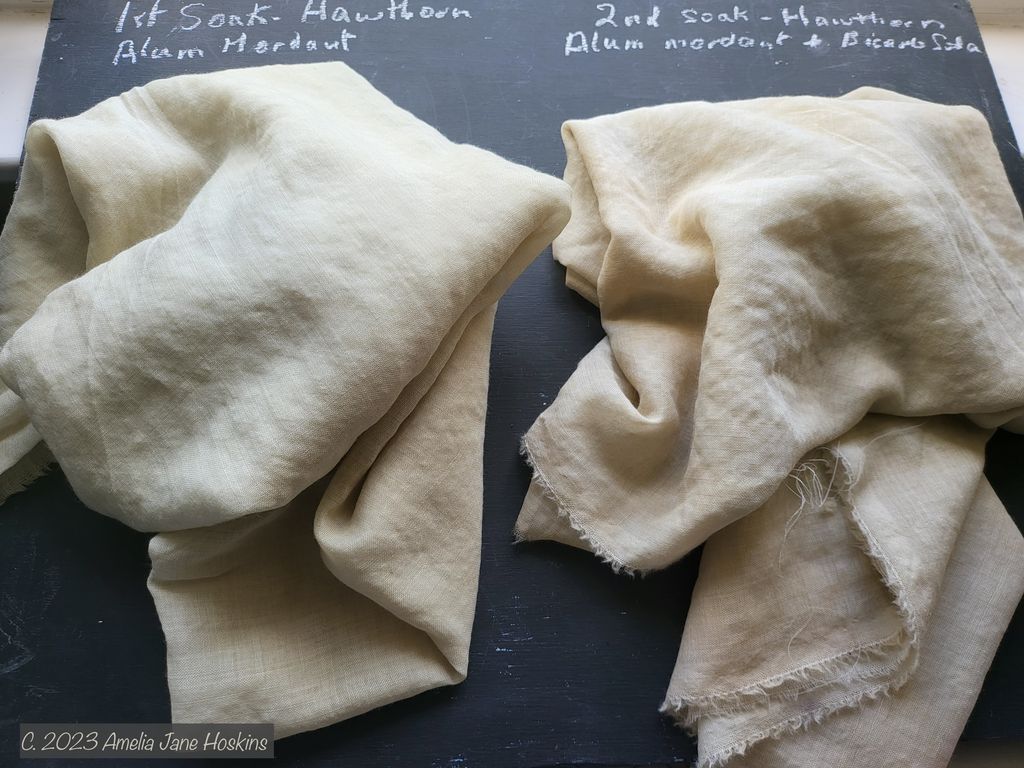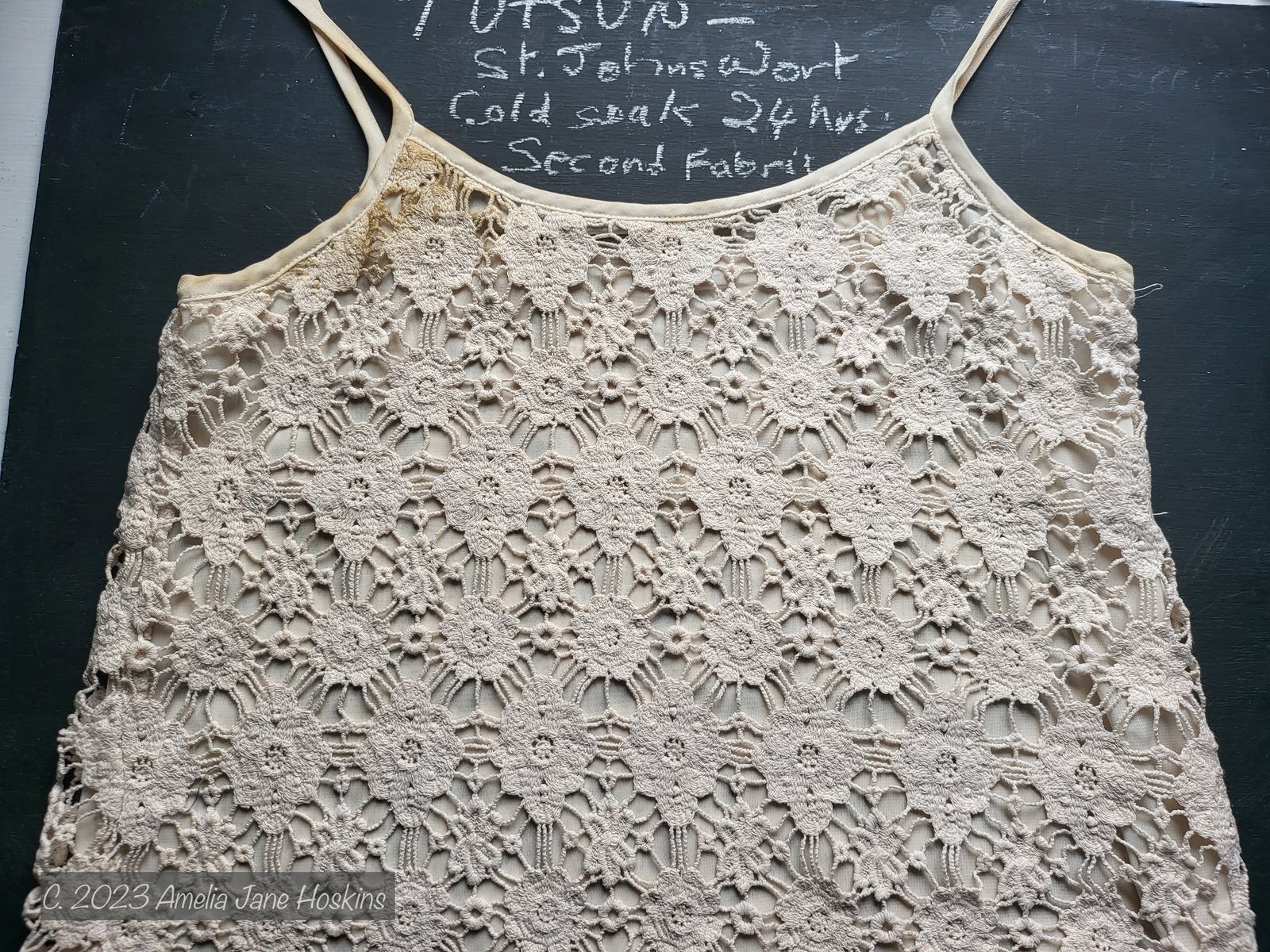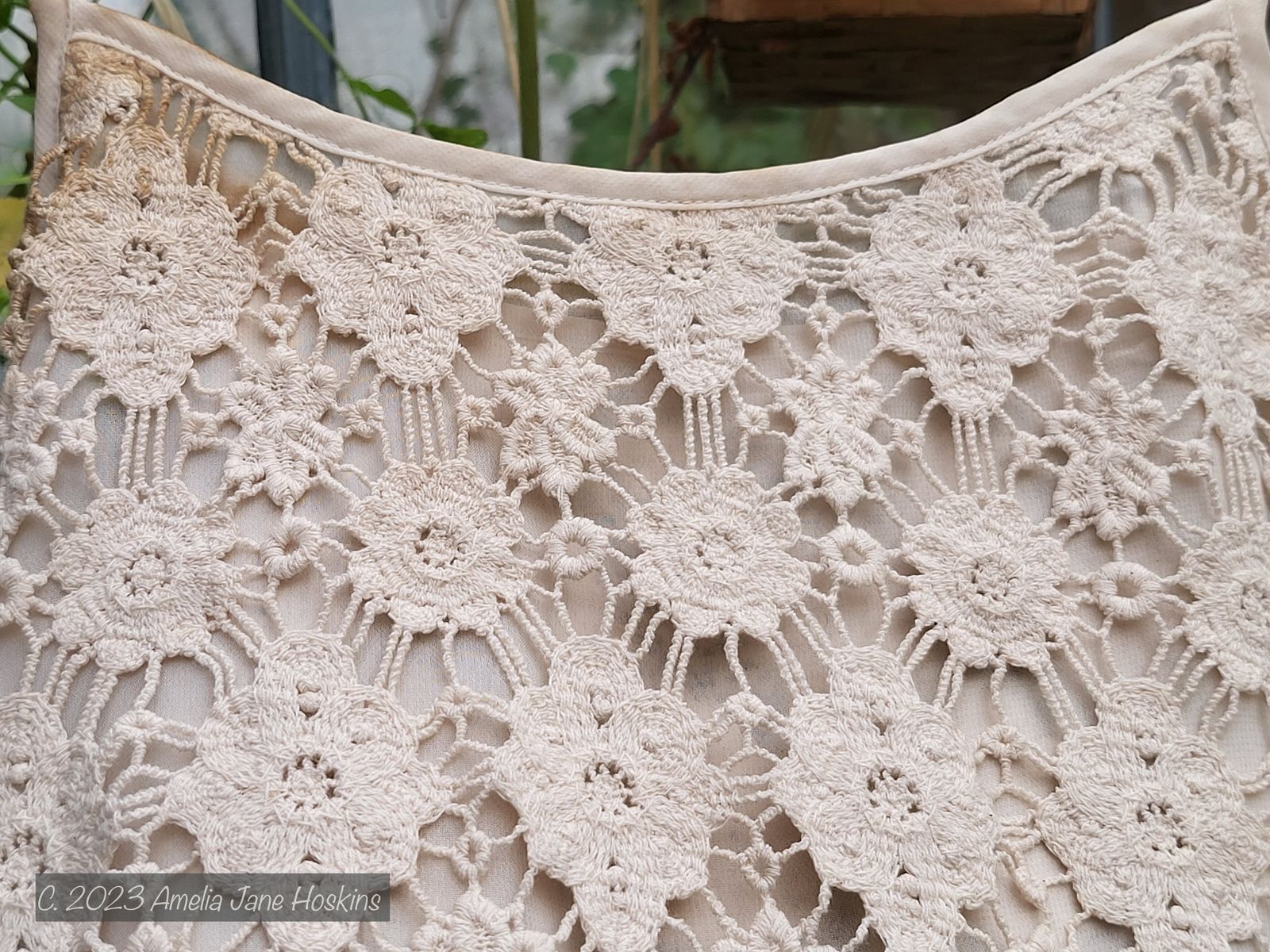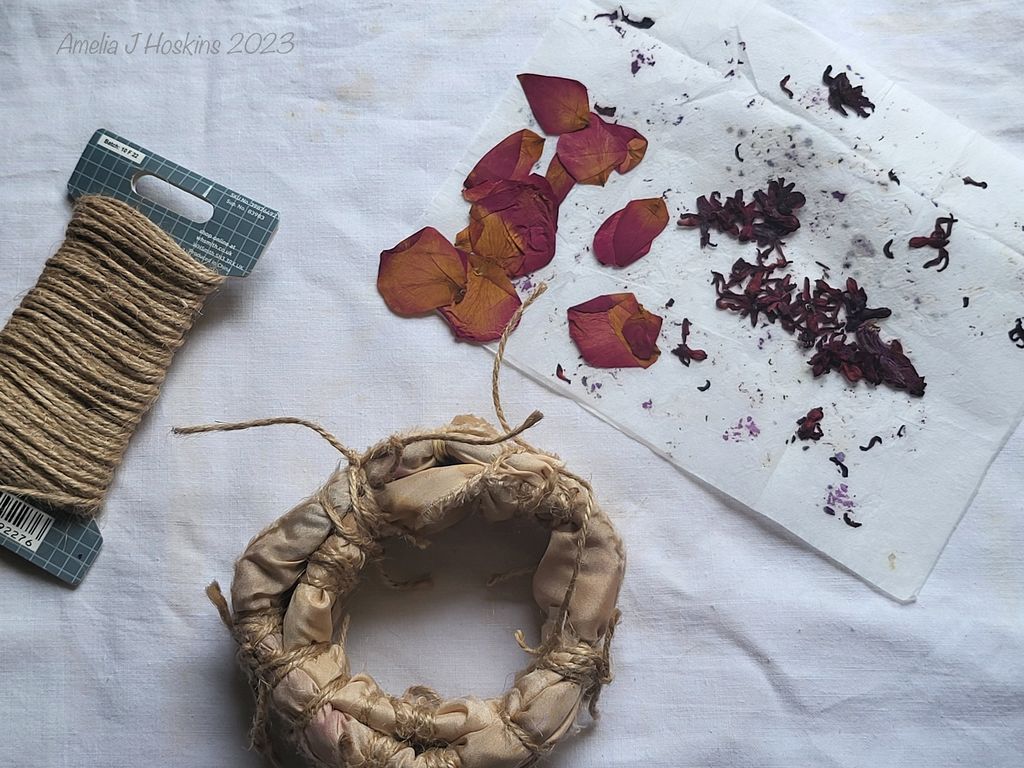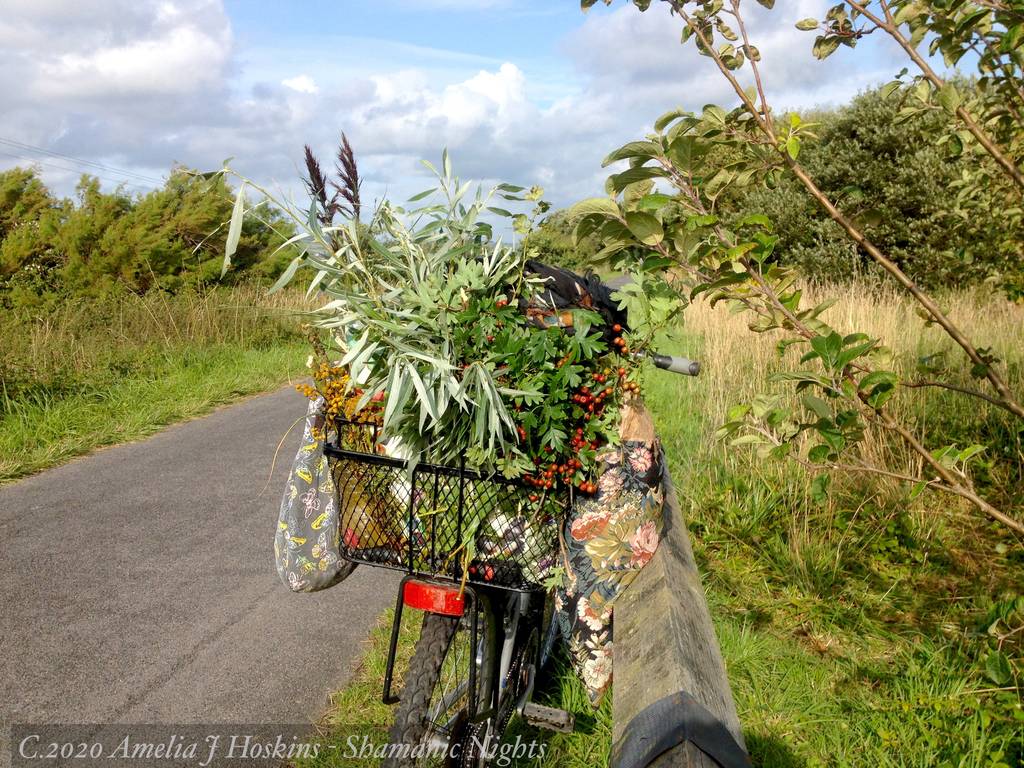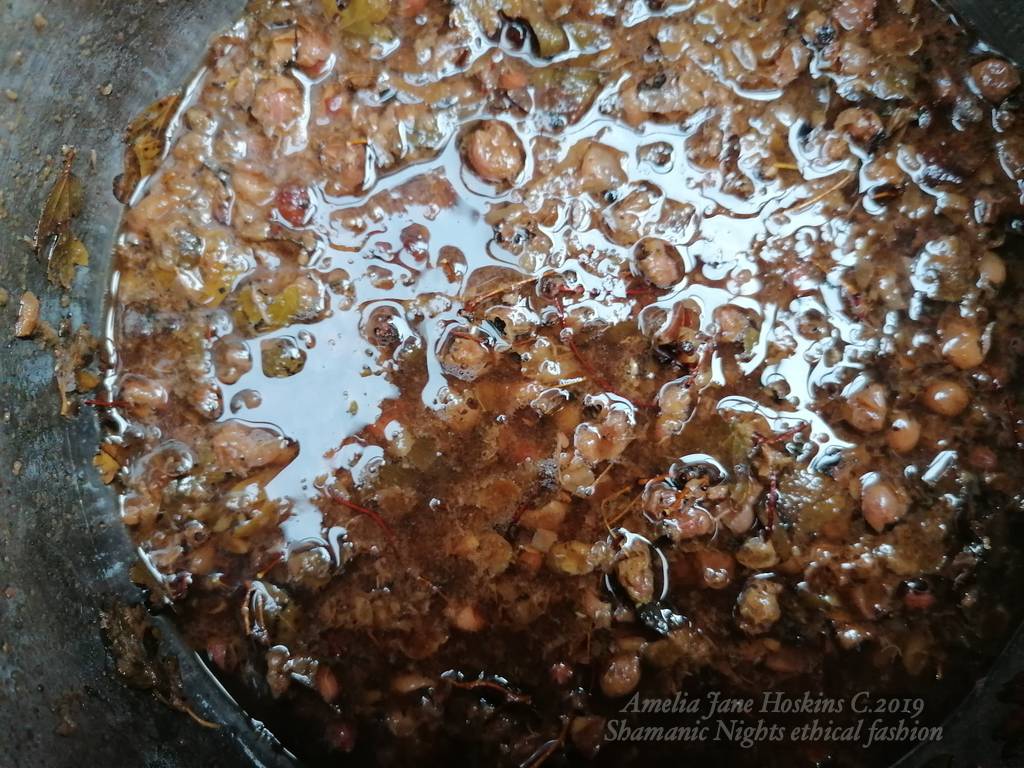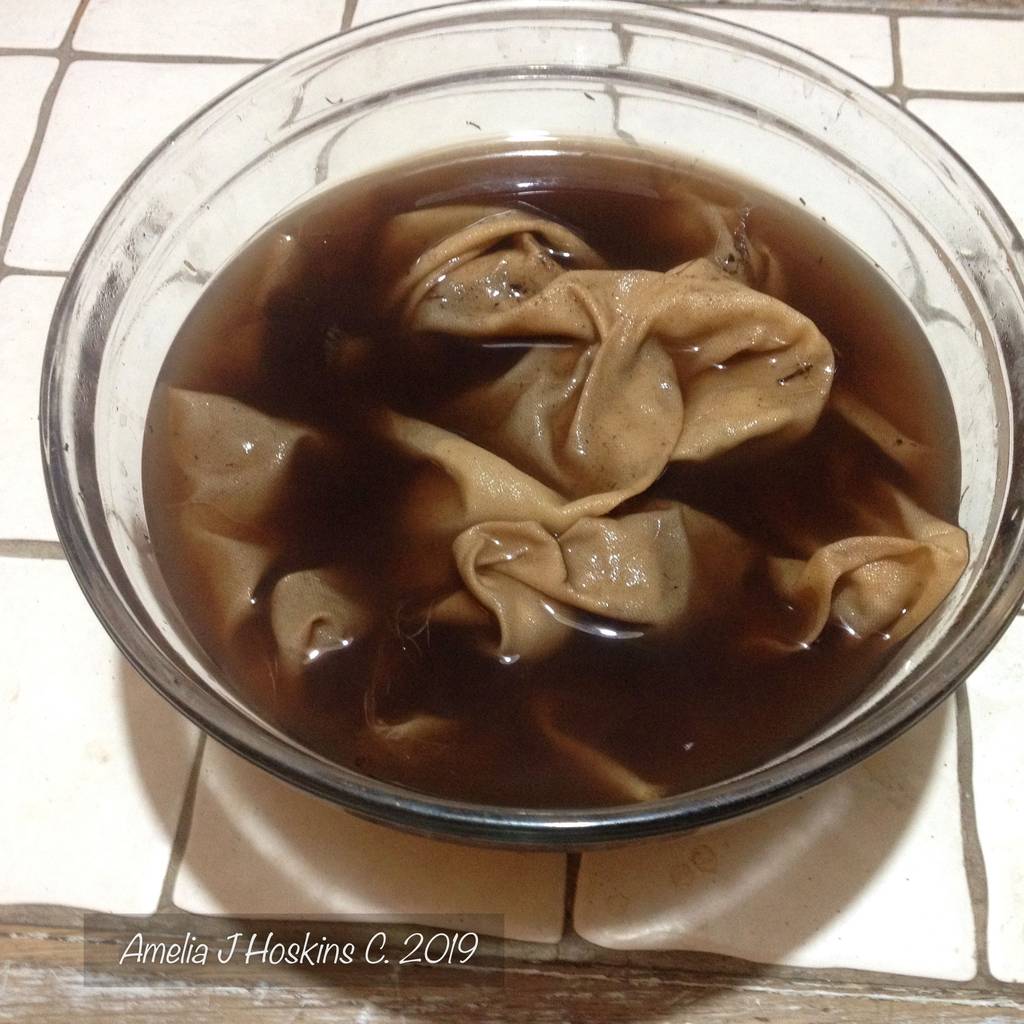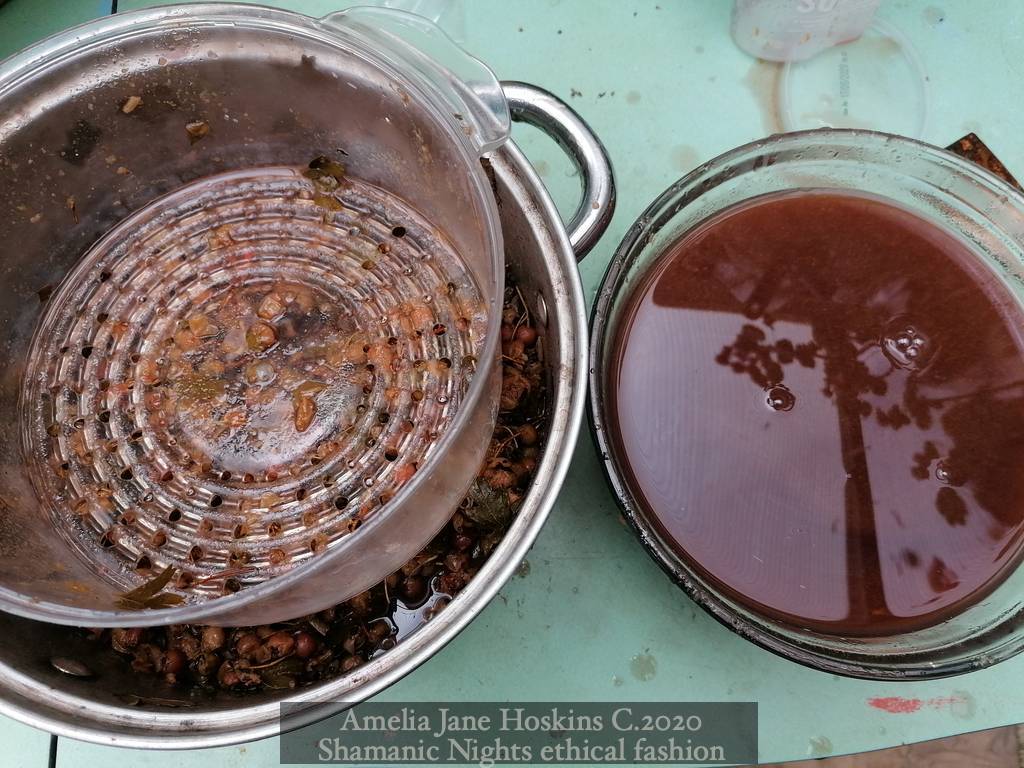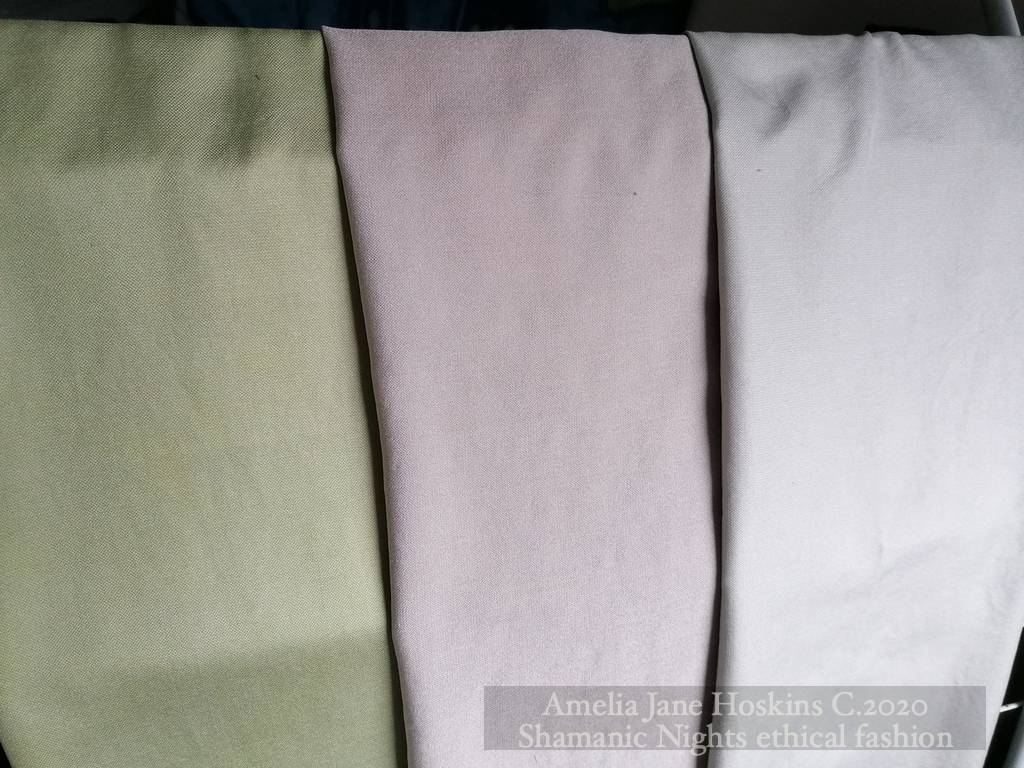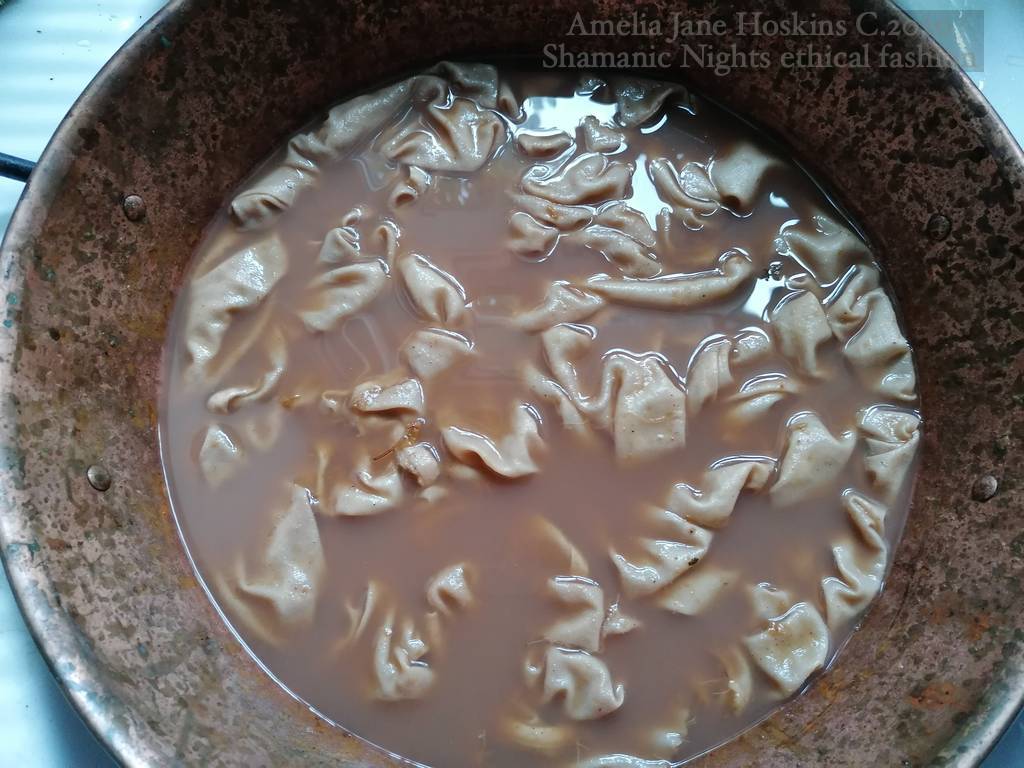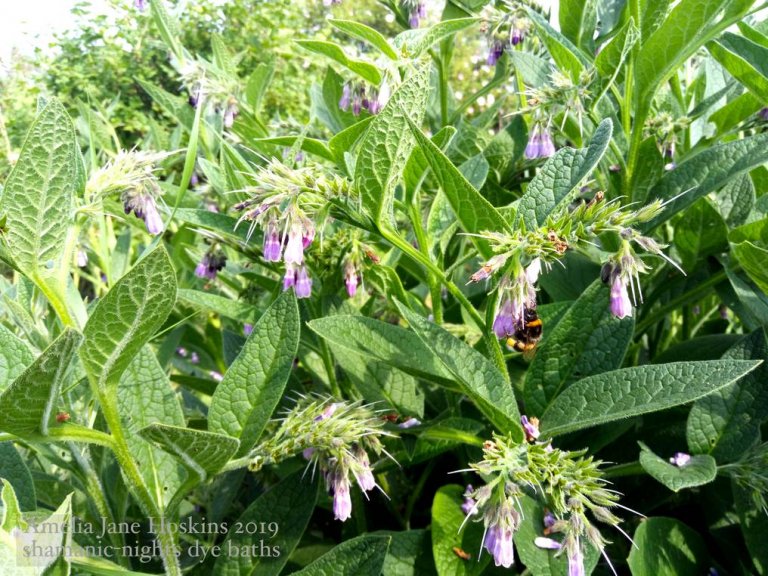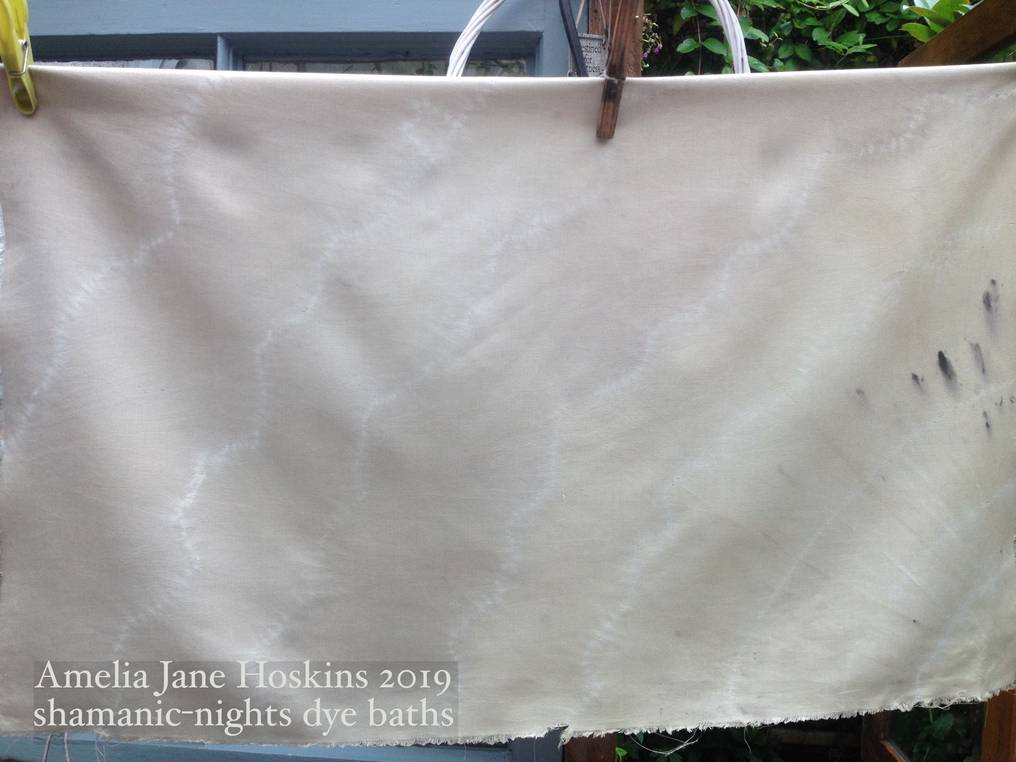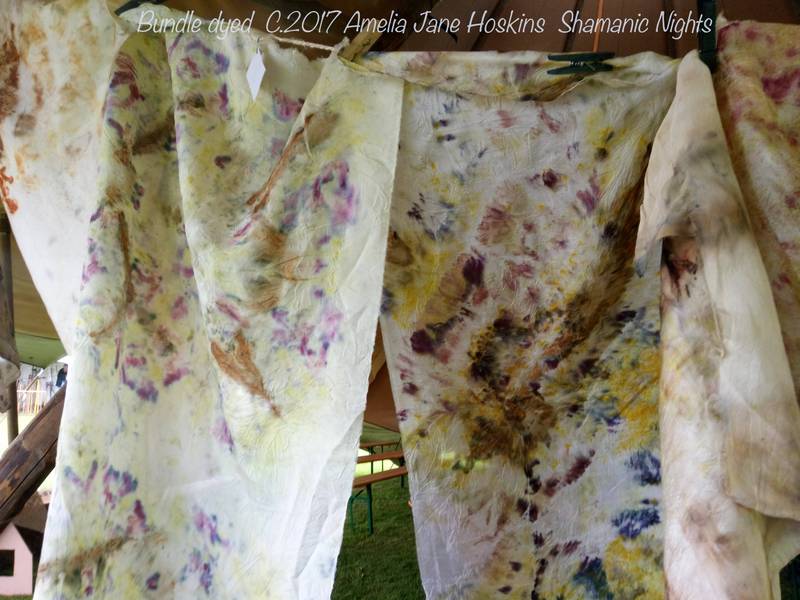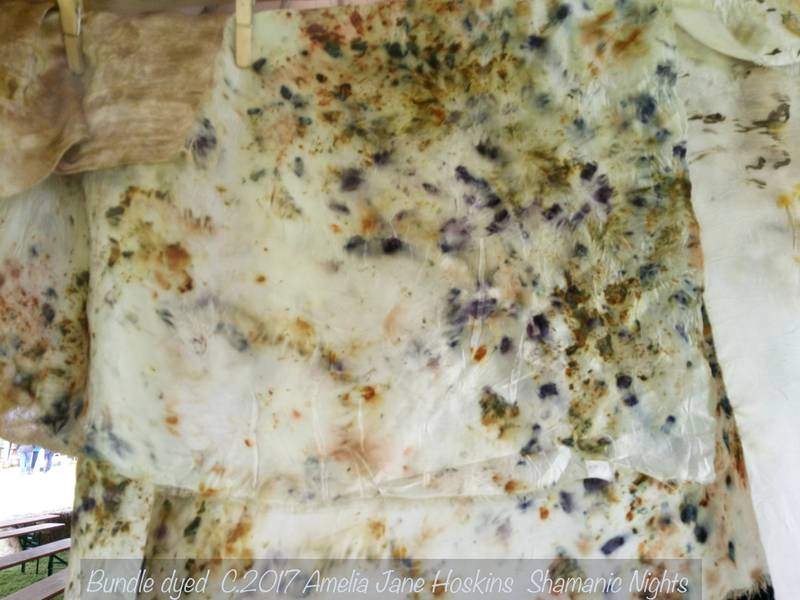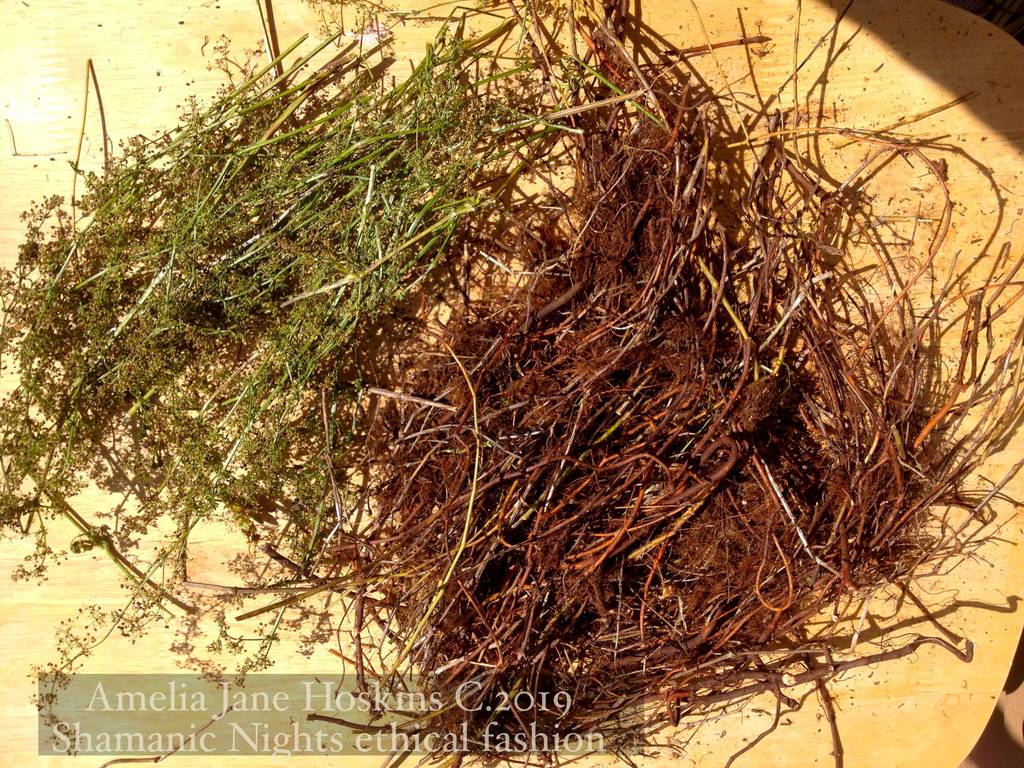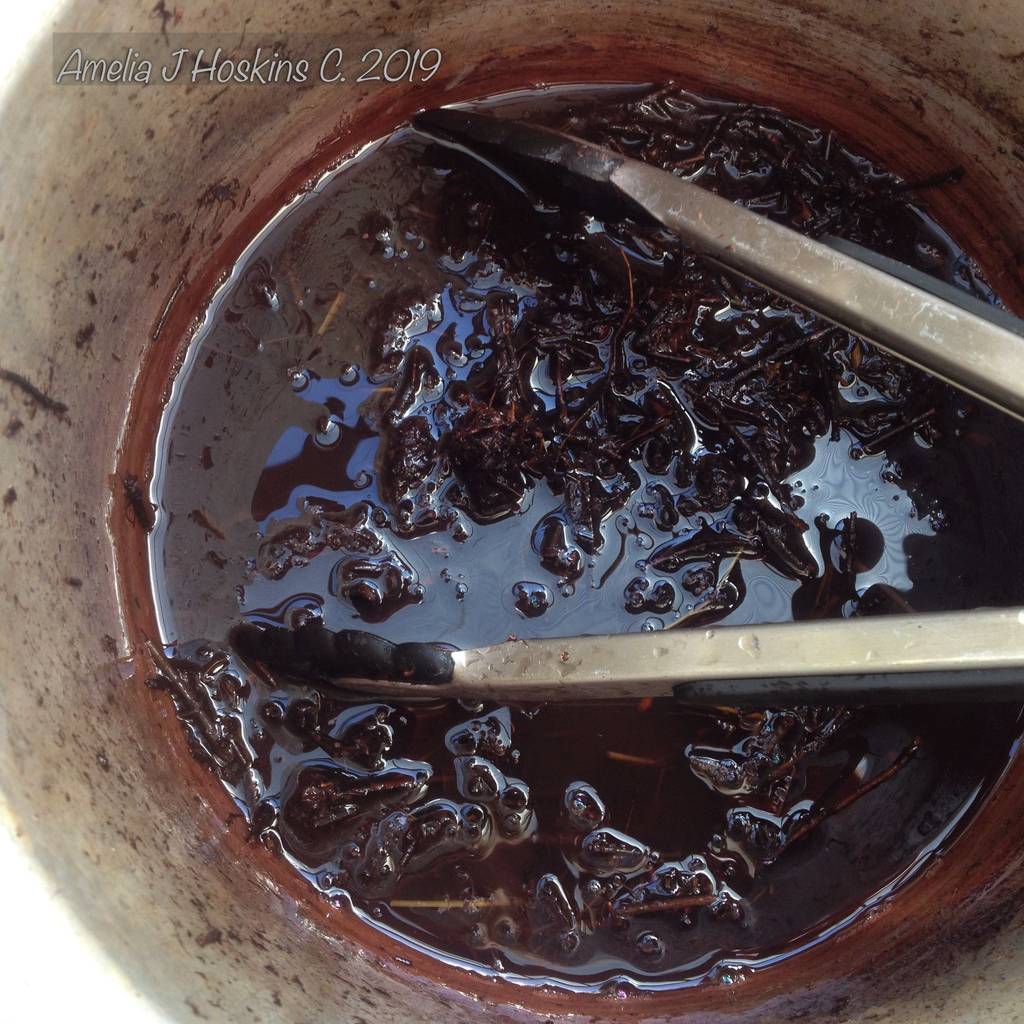Silk and Wool Indian Bean Tree Dye
Tree has large heart shaped leaves which turn cerise, and dark red. Found fallen on the path in early November. The dye pigment is released by slow soaking in rain water, but changes to brown if boiled. (produces similar brown colour as sycamore leaves produce). Pink is released into fabric in cold water.
Silk soaked in alum for mordanting: then soaked overnight in red leaf water. Pigment was rapidly absorbed immediately, and turned deep pink overnight. Washed out in rain water. When hanging in air, starting to dry, it turned silver grey. Finished result is a very good silver, good to coordinate with other grey fabrics.
Silk rinsed result deep pink

Indian Bean Tree - Dye results:
PINK-SILVER on silk : GREEN on wool
Indian Bean Tree - Steam Pressed Leaves
DISCOVERY: Red Indian Bean tree leaves soaked COLD with fabric produces silver on alum mordanted silk, green on wool pre-dyed with hawthorn, and if used HOT steamed, gives brown textures onto Tutsan dyed silk.

EXPERIMENT: Steam printing leaves on Tutsan dyed silk
- Steam press red leaves (underside up) through protective piece of scrap cotton onto silk.
- RESULT: Red or reddish-brown outlines of leaf veins. Not worked each time. Leaves need to be rain water wet.
- Paint leaves with old cider vinegar. Position over silk. Fold silk over double, sandwiching leaves.
- Steam press over leaves areas, pressing hard.
- RESULT: Brown outlines of leaves; appears burnt effect from vinegar. [good for paper printing].
EXPERIMENT - SOYA WAX RESIST - Ferns on Wool
Fine wool was previously dyed in Hawthorn bath (second soak): with splodgy rust marks needing disguise. A good opportunity to experiment with resist techniques.
- Fern leaves laid on, wool length folded over
- Melted soya wax dabbed with stiff paint brush over the fern shapes. Some red Indian Bean leaves placed in spaces.
- Cloth folded rectangularly into flat piece.
- Soaked overnight in cold bean leaf dye bath (after refreshing with more red leaves first).
- On opening parcel, pink dyed area seen [subsequently turns grey , then green]
- Wax washed out, and pressed out with brown paper, then washed again.
- Wax is sticky on wool fabric.
SOYA WAX AND FERNS EXPERIMENT RESULT - MOVES TO GREEN
Feint imprint of fern in centre-right, from soya resist after washing out. Ferns also produce dye showing russet fern shapes in places. It would work with a darker overdye and suit silk better, as wax is more difficult to remove from wool. Final colour was grey green, (now become lime green after various washings to remove wax.) More techniques are needed as the wool piece is still obviously patchy, needing disguise. (see over-designs below).
Experimental painting with natural dye mixes
Grey green wool developed to a brighter lime green after further washing in laundry liquid. Blotchy green coverage suitable for designs overpainted. Triskele design adapted from Adrian Meehan's 'Spiral Patterns', 12 fold division of circle - 'The Hitching hanging Bowl' item c.650 AD. Centre Nigella seed pods from own drawings adapted from own photographs.
Dye powders mixed in pond water and simmered to dissolve. Half a jar of water, level Tblsp or less dye powder, level Tbsp soda ash. The soda ash likely made the colours tend towards brown, e.g. Mimosa, Logwood. Madder turned darker red rather than orange-red.
Madder + soda ash. Logwood + soda ash. Turmeric. Mimosa (1) + soda ash + oak gall = warm brown. Mimosa (2) + soda ash + woad = warm beige (not the lilac possible with Mimosa). Woad (1) pure. Woad (2) + soda ash = greeny blue.
ANTIFUSANTS
Logwood and Woad dye jars were mixed with 'No Flow' to prevent colour bleeding. I also had dabbed the whole fabric with 'no flow' with a natural sponge. Madder was mixed with Epaississant gum ('Se melangea la couleur pour lui enlever son fusant') also to prevent dye spreading out of desired shapes, which worked well, as all red is contained. Blue lines were able to be applied finely, as was the logwood; both with an antifusant added. Mimosa had no antifusant added and bled out of design area; seen around the seed pods in centre. Brown bleed-out areas were bleached with lemon juice afterwards see in above image. Conclusion: half a tsp of antifusant can be added to half full dye jar to prevent bleeding.


Lemon juice was brushed around centre circles to bleach lighter where the Mimosa brown had spread too much.

UNSUCCESSFUL - Colours were not steamed, so washing out removed most of the colour. (Wool must be steamed to fix the dyes, just as silk is. I normally paint with steam fix dyes and wanted to try the natural dyes without steaming. Iron steaming might have half worked). Mimosa and logwood colours still remain embedded though feinter. The feint pastel colours are attractive in their own right, but will be merged into the fresh painting.


WOOL PAINTING RECOVERY - Adding discharged designs again
Discharge paste 'De Clourant' was mixed with warm water, about 50% water/30% discharge paste. (Weaker solution due to a test showing full strength goes yellow on the green dyed wool!). The weaker strength works fine when steamed, and does not leave any thickness on the wool surface. Design shapes of Celtic Triskeles are roughly traced with water soluble pen, then bleached out by applying mix with rough brush marks as the basic outlines of triskeles. (quickest way to re-establish the areas).
REPAINTING WITH NATURAL DYES - Madder, Woad, Logwood, Mimosa (jar mixes)
Fine wool held still with masking tape, over a lightbox perspex sheet before applying gutta-dye lines and infill-dye with brush.
Finished painting of triskeles on fine wool scarf
GREEN WOOL SCARF AFTER STEAMING TRISKELE PAINTING
Slightly disappointing result, but was expected. Background original green (Indian Bean Tree) turned slightly more gold (olive); also changeable in different lights. The aspect of appearing brighter gold-green, or duller olive-green is interesting. Previous painted errors were disguised well.
Madder dye - A ruddy red remained well, but paler. Logwood dye - Aubergine brown paler. Mimosa - brown paler.
Woad dye - first mix very pale blue; second woad mix with soda ash added, looked green in jar, but stayed darker blue after steaming.




